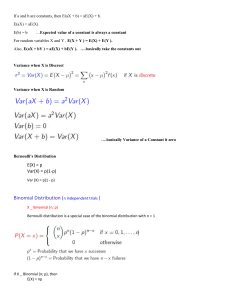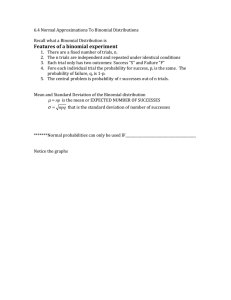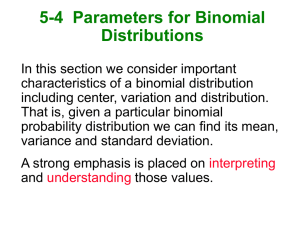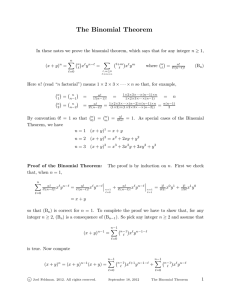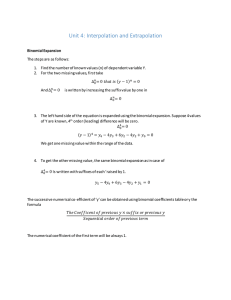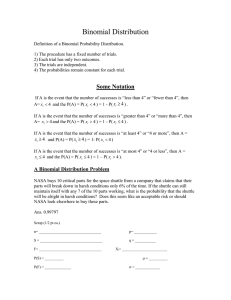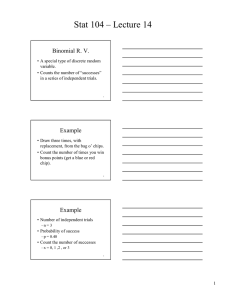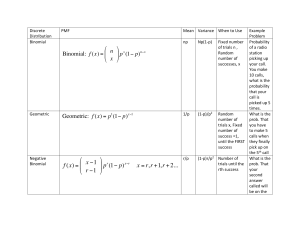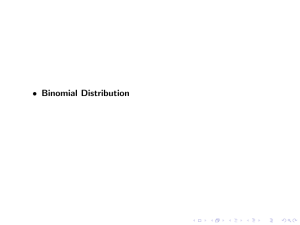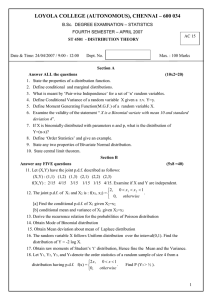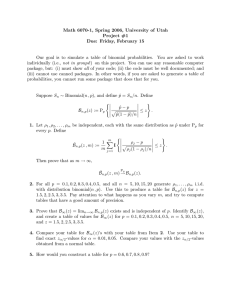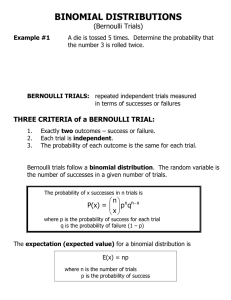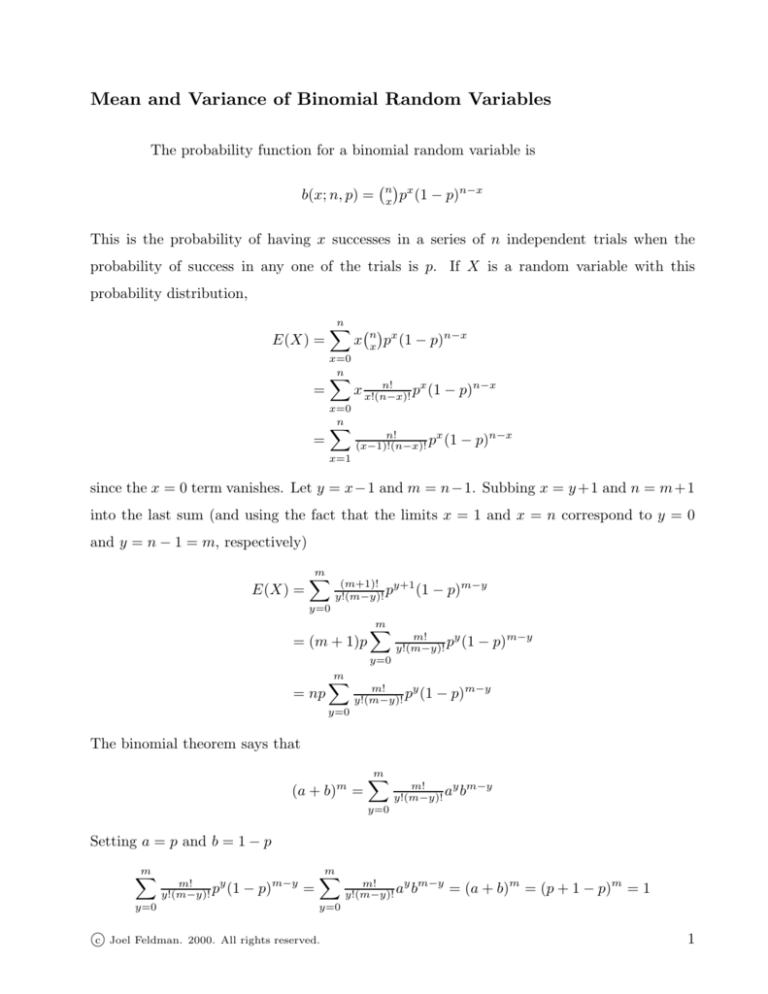
Mean and Variance of Binomial Random Variables
The probability function for a binomial random variable is
n
x
b(x; n, p) =
px (1 − p)n−x
This is the probability of having x successes in a series of n independent trials when the
probability of success in any one of the trials is p. If X is a random variable with this
probability distribution,
E(X) =
n
X
x
=
x=0
n
X
n!
x x!(n−x)!
px (1 − p)n−x
=
x=0
n
X
x
n!
(x−1)!(n−x)! p (1
x
p (1 − p)n−x
n
x
− p)n−x
x=1
since the x = 0 term vanishes. Let y = x −1 and m = n −1. Subbing x = y +1 and n = m+1
into the last sum (and using the fact that the limits x = 1 and x = n correspond to y = 0
and y = n − 1 = m, respectively)
E(X) =
m
X
(m+1)! y+1
p (1
y!(m−y)!
− p)m−y
y=0
= (m + 1)p
m
X
y
m!
y!(m−y)! p (1
− p)m−y
y=0
= np
m
X
y
m!
y!(m−y)! p (1
− p)m−y
y=0
The binomial theorem says that
(a + b)
m
=
m
X
y m−y
m!
y!(m−y)! a b
y=0
Setting a = p and b = 1 − p
m
X
y
m!
y!(m−y)! p (1
y=0
c Joel Feldman.
− p)m−y =
m
X
y m−y
m!
y!(m−y)! a b
= (a + b)m = (p + 1 − p)m = 1
y=0
2000. All rights reserved.
1
so that
E(X) = np
Similarly, but this time using y = x − 2 and m = n − 2
E X(X − 1) =
n
X
x(x − 1)
=
x=0
n
X
n!
x(x − 1) x!(n−x)!
px (1 − p)n−x
=
x=0
n
X
x
n!
(x−2)!(n−x)! p (1
n
x
px (1 − p)n−x
− p)n−x
x=2
= n(n − 1)p2
n
X
(n−2)!
px−2 (1
(x−2)!(n−x)!
= n(n − 1)p2
x=2
m
X
y
m!
y!(m−y)! p (1
− p)n−x
− p)m−y
y=0
2
= n(n − 1)p p + (1 − p)
m
= n(n − 1)p2
So the variance of X is
E(X 2 ) − E(X)2 = E X(X − 1) + E(X) − E(X)2 = n(n − 1)p2 + np − (np)2
= np(1 − p)
c Joel Feldman.
2000. All rights reserved.
2

